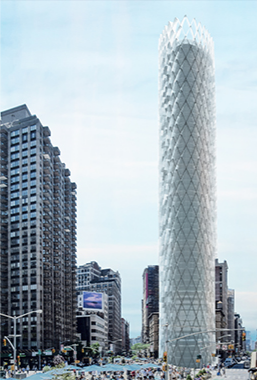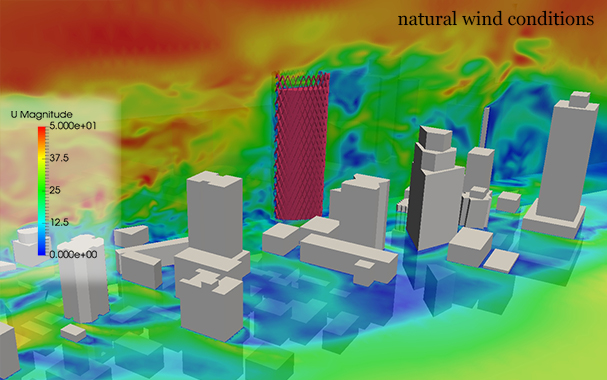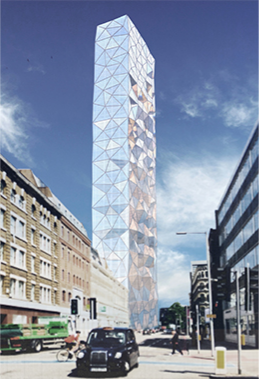WP7 Application to robust shape optimization of structures under wind loads
Objectives
The objective of the work package is to apply the developments of the project to a realistic test case. The WP is targeted not just at showcasing the project developments, but also to provide a realistic (and challenging) task of real engineering interest. The partner STR.UCTURE GmbH is included in the project exactly due to his expertise on the specific field, so to provide an industrial steering to the developments.
Optimisation, Parametric Design and Wind Simulation
“Tall buildings in motion” is a case study by str.ucture GmbH, demonstrating how computational simulation techniques allow the realistic assessment of all wind phenomena and response mechanisms of tall buildings.
Two high-rise designs were developed and analysed in different wind flow environments. The results of the computational methodology are validated against measurements from physical wind tunnel tests. The investigated design process includes Computational Parametric Design (CPD), Computational Fluid Dynamics (CFD), Computational Structural Dynamics (CSD) and Fluid Structure Interaction (FSI).
With the developed setup, complex structural systems and building shapes can be efficiently optimized in early design phases.
Tasks
Task 7.1 – Problem definition, including geometry, boundary conditions and validation data
The objective of this task, to be performed early in the project, is to define fully the problem of interest in the field of wind engineering. The problem will be chosen to be both relevant from a scientific point of view and emblematic.
Task 7.2 – “Deterministic” simulation of a wind flow scenario to be used as reference. Validation of the base scenario
The wind scenario of choice will be solved according to the current industrial standard. Comparison to experiments will be done if possible. Also a comparison to the design norm will be made.


Task 7.3 – Validation and verification of the CFD codes for the application of interest
The different CFD codes, including both the “standard” versions and the novel time-parallel (or space-time-parallel) version will be benchmarked against the validation data, both in terms of runtime and of predictions. This will be done using the Scheduler’s api in the spirit of VVUQ.
Task 7.4 – Demonstrator test case: UQ quantification
This task will pursue the actual simulation of a realistic wind engineering test case, as defined in the previous tasks. The focus will be on Uncertainty Quantification.
Task 7.5 – Demonstrator test case: Stochastic Optimization
This task will pursue the actual simulation of a realistic wind engineering test case, as defined in the previous tasks. The focus will be on performing a complete Stochastic Optimization of the selected framework.
Task 7.6 – Evaluation of the Uncertainty Quantification runs
This task focuses on providing engineering insight on the results of UQ in application to the wind application. It will thus represent a sort of “exam” for the results of WP5.
Task 7.7 – Evaluation of the Stochastic Optimization results
This task focuses on providing engineering insight on the results of Stochastic Optimization in application to the wind application. It will thus represent a sort of “exam” for the results of WP6.



